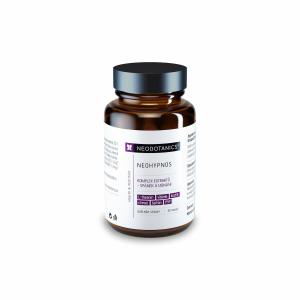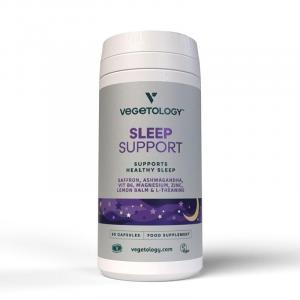
Metabolic age is an important indicator of your health and vitality

What Your Metabolic Age Reveals About You and How You Can Influence It
There are countless ways to measure physical fitness in the world. From traditional scales to BMI and sophisticated methods like body composition analysis. In recent years, the term metabolic age has been increasingly mentioned. Does it sound like another fad? Perhaps. But at the same time, it represents an interesting indicator of how our body truly is—regardless of the birth date.
What is Metabolic Age and Why It Matters
Metabolic age is a number that reflects the biological state of your body based on metabolism, specifically the speed at which your body burns energy. For instance, if you are 40 years old, but your body functions like that of a thirty-year-old, your metabolic age is 30 years—and that’s great news. Conversely, if your body functions like that of a fifty-year-old, even though you are a decade younger, it's time to take notice.
Unlike calendar age, which we cannot influence, metabolic age can be significantly influenced. That’s why it is becoming an increasingly important tool in the realm of a healthy lifestyle, nutrition, and fitness.
But how is metabolic age calculated?
Calculating Metabolic Age
There is no universal formula that allows you to easily calculate metabolic age at home. Specialized devices are usually used—called bioelectrical impedance scales, which measure body composition and, based on data such as muscle mass ratio, amount of fat, basal metabolic rate (BMR), body hydration, and other factors, estimate the age of your metabolism.
Additionally, there are online metabolic age calculators that estimate a rough value based on input data such as age, gender, height, weight, and level of physical activity. Although the results of these "quick" calculations are not as precise as those from body analyzers, they can serve as an initial insight.
Some calculators also consider advanced factors—such as waist circumference, body fat percentage, or resting heart rate. These data can help refine the calculation and offer a deeper understanding of what is happening in our body.
So, how can you tell if your number is within the norm? An indicative metabolic age chart might help, showing average values for different age groups. For example:
- 20–29 years: metabolic age 18–25
- 30–39 years: 25–35
- 40–49 years: 35–45
- 50+ years: 45+
It's important to remember that these values are indicative and can vary depending on gender, genetics, and lifestyle. Nevertheless, they can serve as a starting point to track the trend of whether our body is "rejuvenating" or "aging" faster than the calendar.
Why Your Metabolic Age May Be Higher Than Your Actual Age
A high metabolic age is not a disease or diagnosis; it is more of a warning signal. It often results from a combination of several factors—low physical activity, poor eating habits, lack of sleep, excessive stress, or smoking. In some cases, hormonal imbalance, genetics, or undiscovered health problems may also play a role.
Imagine two men of the same age—both are 38 years old. One exercises regularly, eats balanced meals, has good muscle mass, and a low body fat percentage. The other spends most of his day at the computer, eats irregularly, is overweight, and sleeps 5 hours a day. The first may have a metabolic age under 30, while the second could easily be over 50. The difference is striking—not only on paper but also in how they feel, their energy levels, and their risk of chronic diseases.
How to Lower Your Metabolic Age Naturally
The good news is that metabolic age is not immutable. On the contrary—it is a parameter that can be fairly well influenced by lifestyle adjustments. Experts agree that the key is four pillars: exercise, nutrition, sleep, and recovery. Let’s take a closer look at them.
1. Regular Physical Activity
Muscles are metabolically active tissue—the more we have, the more energy our body uses, even at rest. Strength training, interval training, brisk walking, or cycling can help speed up metabolism. You don’t have to run a marathon right away—even a daily 30-minute walk has an effect.
2. Food as Fuel, Not an Emotional Cover
A balanced diet rich in proteins, healthy fats, and fiber can support burning and stabilize blood sugar levels. Conversely, an excess of sugars, processed foods, and alcohol slows metabolism. It is also recommended to eat regularly, avoid overeating, and not skip breakfast.
A well-functioning metabolism also needs vitamins and minerals—such as magnesium, zinc, B vitamins, and iron. However, it is ideal to obtain them from a varied and quality diet instead of supplements.
3. Sleep and Recovery
Lack of sleep increases the level of stress hormones, slows down metabolism, and promotes fat storage. Studies from Harvard Medical School have repeatedly shown that people who sleep less than 6 hours a day have up to a 30% higher risk of obesity. Regular quality sleep (ideally 7–9 hours) is therefore fundamental.
Try our natural products
4. Reducing Stress
Chronic stress activates the so-called "fight or flight" mode, keeping the body on high alert. The result is accelerated cellular aging, inflammatory processes, and higher fat storage—especially in the waist area. Techniques like breathing exercises, yoga, meditation, or simply spending time in nature can help bring the body back into balance.
Metabolic Age as Motivation, Not a Sentence
"Age is just a number," they often say—and for metabolic age, this holds doubly true. It’s not a competition where you need to have the lowest number, but a useful tool that can help us understand what the body needs. If it shows a higher value, it's not a reason to stress, but rather motivation for change.
Changing metabolic age doesn’t happen overnight, but the good news is that the body responds fairly quickly—within a few months, you can feel significantly better. Many people who started exercising regularly, adjusted their diet, and found a balance between work and rest report that their metabolic age has dropped by up to 10 years.
And finally—let’s not forget that health is not just about numbers. It’s about energy, the joy of movement, the ability to sleep well, and having a zest for life. Metabolic age can help support all of this—if we listen to it.



